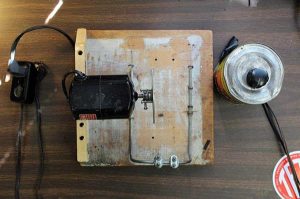
Do Guitar Pickups Affect Sustain?
Today, we’re tackling a question we often get asked: Which of your pickups has the most sustain?
If you’re looking for the short answer, it’s this: pickups don’t really affect your instrument’s sustain. Your guitar’s components make up the bulk of the reason why your guitar has a good sustain – or doesn’t. But – there’s more to it than that, so let’s dig in and further explain what’s happening with your guitar’s sustain.
Where does your guitar’s sustain come from?
Your guitar’s sustain is not solely dependent on the pickups. The pickups are designed to capture the vibrations of the strings. If the string isn’t sustaining, it’s not your pickups’ fault (…or is it? We’ll explore this further in a moment).

The sustain of an instrument comes from the sum of its parts:
- The guitar’s body – the shape, design, and tonewoods chosen
- The string’s “contact points” – think the Bridge, saddle, and nut
- The setup of your instrument
If your guitar is a solid-body instrument with a quality Bridge and Bone nut, its strings will sustain more than those of a guitar without these attributes.

How do pickups affect sustain?
Your guitar’s pickups only affect sustain if they are set too high. Setting pickups too high can affect the string’s oscillation pattern physically (your strings are bumping into the pickup) or magnetically (your strings are getting pulled by the pickup’s magnets).
Follow this guide to properly set your pickup’s height and get the most sustain out of your guitar.
How do I increase my guitar’s sustain?
While changing your guitar’s body or tonewood selection is only feasible by buying a new guitar or body, you can increase your guitar’s sustain by performing a few simple upgrades and tweaks. Here are a few ideas:
- Get a proper setup. If your action is too low, your string will not oscillate as long as it should. Set your action a little higher, and your tone (and sustain) will thank you.
- Increase the quality of your Bridge. Your Bridge and Saddles are generally the first “point of contact” for your guitar’s string. A solid, quality point that the string can rest on can help increase your sustain. Check out Callaham bridges and saddles for Stratocasters or Telecasters—they can make an enormous difference. For example, I replaced my Strat’s tremolo block and saddles with Callaham parts, and it was almost too much sustain—it’s a total game changer!
- Check your nut! While this sounds a bit goofy, it’s true. A properly cut nut made of dense material will allow your strings to sustain longer than a soft plastic nut.
- Check your pickup height (read this article here). As mentioned above, if your pickups are set too high, they can affect the oscillation pattern of your strings.
- Increase your string gauge. If you’re one of those players using 8s on your guitar and suffering from sustain problems, try increasing your string gauge to at least 10s (if you can). You’ll need another setup, but you’ll notice improvements in your sustain!
If you take the time to improve the acoustic qualities of your instrument, you’ll only benefit when you plug your beloved guitar into your amp. Got any sustain tips? Drop them below!
Comments
4 Comments For This Post
Leave A Comment
Want to chime in to the conversation? Please do so! Please respect others.







Very nice article, Thanks !
There’s one thing I always wondered, which is the effect of the number of pickups. Indeed, if the effect of the pickups on the sustain in through the magnetic force they produce on the strings when they are too close, then we could imagine that the addition of the magnetic forces of 2 or 3 pickups mounted on the same guitar has an effect too (if compared to the same guitar with only one of these pickups). And same thing with humbuckers (which have twice more magnets than single coils), how do they affect the sustain? do they effectively affect mechanically the sustain but somehow compensate thanks to their higher gain?
Would like a lot to read about that..;)
Thanks for this article! All the suggestions here are to me very valid.
And couldn’t agree more with the bridge/saddle/nut combination, very true.
I would add that the neck relief is very important in this. You can set the string height high but too flat of a neck might still affect the oscillation of the string. It’s a marriage between neck relief and string height.
Thanks again guys, keep the articles coming ??
I’d love to see an article regarding sustain characteristics of bass guitars, please
I think these articles that Tyler dose are great reads so for those thanks ever so much. I have been building and most importantly setting up guitars both electric and acoustic for quite a number of years. I have done lots of experiments with nuts and saddles and use to think bone for tone until I found Tusq by Graph Tech. For a lot of acoustic guitars, I might still put in bone if that is what is ask for. With electric guitars I first try to enlighten the customer on the benefits of Tusq especially if their a bender you can’t beat them for saving strings. I also think they have as good if not better tone and sustain as bone or anything out there just my opinion though try them and form your own. Once again thanks for the great reads look forward to more. Mik